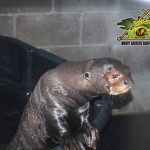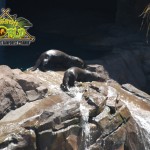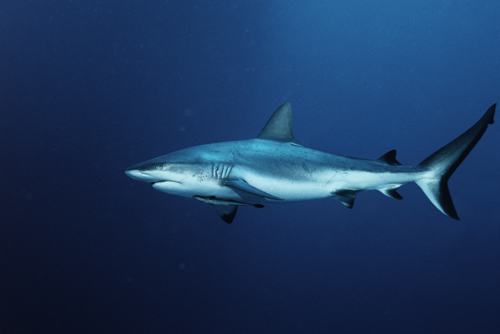
A recent string of shark sightings along the Texas Gulf Coast has sparked a flurry of media interest and has beach-goers questioning their safety in the salty waters. According to recent reports, two large sharks were caught from the shorelines at Crystal Beach and Matagorda Bay and a college student was bitten at Surfside Beach, adding to the animosity between man and fish that Steven Spielberg helped permeate our culture nearly four decades ago.
While the image of massive aquatic beasts breaking the surface to swallow anything in sight has been burned into our collective consciousness via Jaws or the Discovery Channel’s Shark Week, several experts, including those at Moody Gardens, say that sharks are misunderstood creatures and it’s important that humans learn to respect them and know how to safely share the ocean with them.
For any who are apprehensive about visiting Galveston and going to the beach because of what may be swimming beside them the water, here’s a breakdown of shark fact and fiction to help shed some light on whether or not their reputation is deserved.
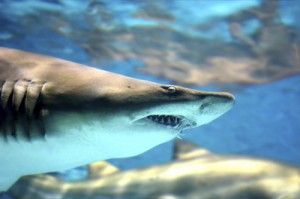 FICTION: Increased sightings of sharks in the Texas Gulf Coast means I’m more likely to get bitten if I go swimming.
FICTION: Increased sightings of sharks in the Texas Gulf Coast means I’m more likely to get bitten if I go swimming.
FACT: Instances of sharks attacking humans are extremely, extremely rare. According to Roy Drinnen, Moody Gardens’ assistant curator of fishes, while there are numerous sharks that make their home in the waters off Galveston Island, there have only been approximately 11 shark bites reported in the Galveston Bay area in the last 100 years.
“There are sharks out there. That’s their home. We basically are visitors when we go swimming. We have to expect them to be out there,” Drinnen said. “You have a better chance being struck by lightning or killed by a group of bees.”
FICTION: Sharks are a bigger threat to humans than humans are to sharks.
FACT: Humans are a huge threat to sharks, as overfishing is the biggest threat to their existence. A soup made from shark fins is a delicacy in many countries. Sharks are routinely caught and thrown back into the ocean to die after their fins are chopped off in a process called “finning.” Finning is now prohibited in the United States.
FICTION: There’s nothing you can do to reduce your chances of being attacked by a shark.
FACT: Swimmers can take numerous precautions to reduce their chances of being mistaken for prey by a shark. A few tips include:
- Avoid swimming at dawn and dusk (sharks’ typical feeding time)
- Avoid wearing any shiny, flashy clothing or jewelry that a shark can mistake for a fish in the Gulf’s murky waters
- Leave the water if you are bleeding in any way, as sharks are attracted to the smell of blood.
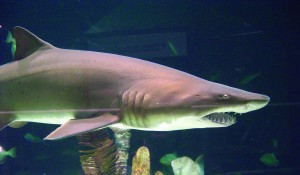 Overall, sharks are beautiful animals that deserve respect more than fear. While sharks are plentiful in the Gulf of Mexico with approximately 15 species inhabiting the waters around Galveston, attacks are few and far between.
Overall, sharks are beautiful animals that deserve respect more than fear. While sharks are plentiful in the Gulf of Mexico with approximately 15 species inhabiting the waters around Galveston, attacks are few and far between.
To learn more about sharks, visit the Sharks: In Depth exhibit, currently in the Aquarium Pyramid at Moody Gardens®.



